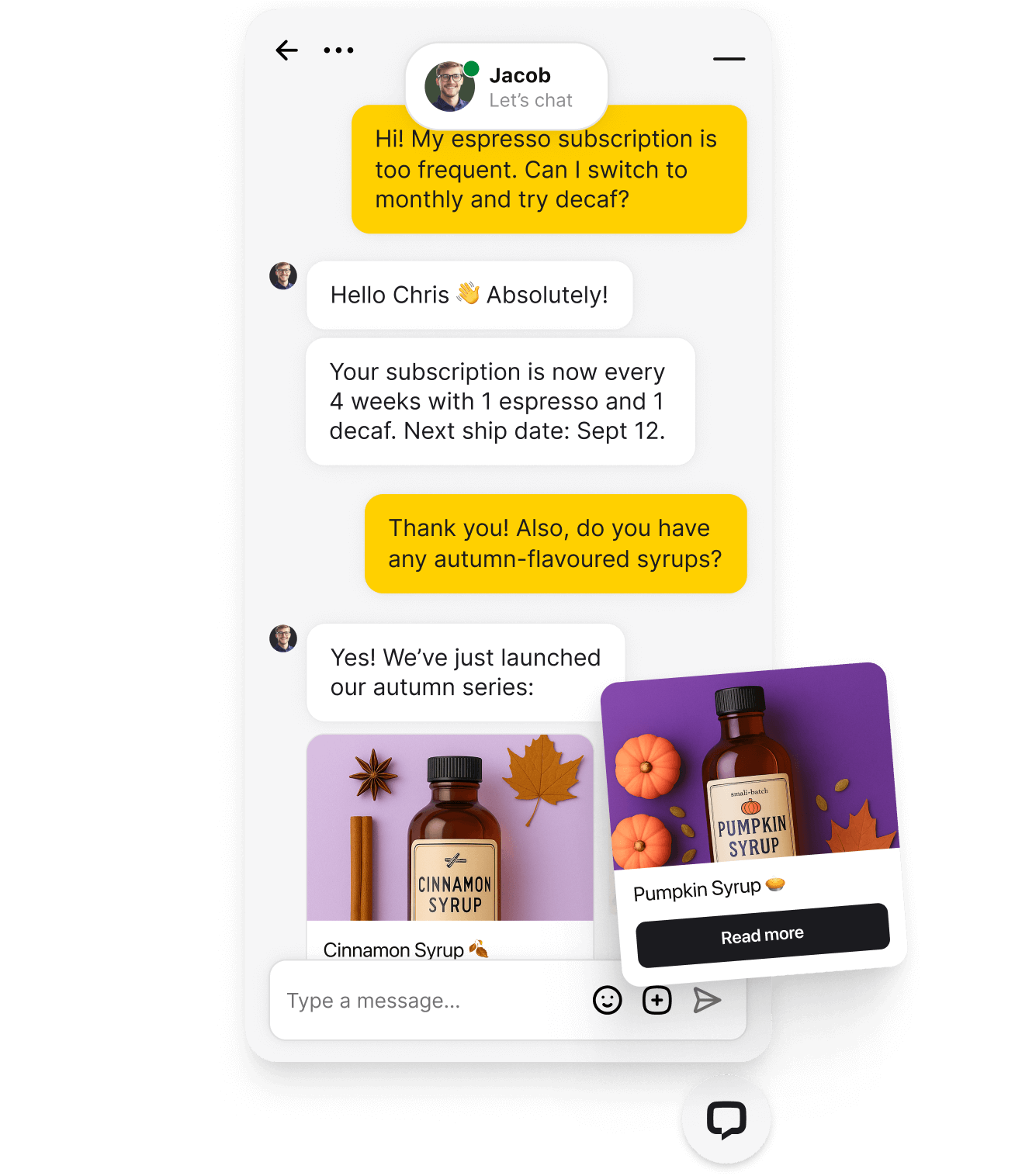
TL;DR: Most AI projects fail, but the 5% that work follow a simple playbook: fix money leaks, train on your data, track ROI, free humans for growth, and scale wins. Do that, and AI stops costing you — it starts paying you.
***
Last year I sat across from a founder who’d just spent six figures on an “AI initiative.” The promise was bold: automate 80% of their support tickets, slash costs, and scale without hiring. The reality? More tickets than ever, frustrated customers, and a team scrambling to fix what the bot broke.
That story isn’t rare. MIT researchers found that 95% of generative AI projects fail. The flip side is more interesting: the 5% that work are delivering real financial gains — from lower churn to faster sales cycles.
So how do you end up in that 5%? Not by chasing demos or hype, but by following a playbook we’ve seen work across industries.
In this guide, I’ll break down five steps that actually make money with AI, backed by examples from companies using Text App to turn support from a cost center into a revenue driver.
Step 1. Start where the money leaks are
Most companies begin their AI journey in the wrong place: a shiny demo or a feature that looks futuristic. The problem is, demos don’t pay invoices. Fixing leaks does.
Think about your support queue. Every password reset an agent handles is time not spent on a renewal conversation. Every manual return request chips away at margin. These leaks add up fast.
In ecommerce, returns and refunds are the biggest culprits. In SaaS, it’s billing questions. In retail, it’s order status checks. Across industries, the pattern is the same: repetitive, low-value tickets consume expensive human time. That’s exactly where AI agents in Text App step in — resolving routine issues instantly so your team can focus on higher-value conversations like upsells, renewals, or VIP support.
The lesson: start where money is escaping the fastest. If AI patches those leaks, you don’t just stop losing — you start compounding gains.
Step 2. Turn your data into an asset
AI is only as smart as the information it’s fed. Out of the box, most tools sound impressive but collapse the moment a customer asks a question that isn’t in the script. That’s when projects fail — and costs spiral.
The flipside: when you ground AI in your own knowledge, it becomes an asset that makes you money.
Take SaaS businesses. Generic chatbots often give confident but wrong answers about billing or product features. The result? More churn, more escalations, and higher costs. When companies connect AI agents in Text App directly to their help center or CRM, the shift is immediate. Instead of guessing, the AI pulls policy updates, account details, or past conversations in seconds.
Accuracy jumps. Handle times drop. Customers stay. What used to be a liability turns into a profit lever.
The lesson: generic AI drains money; AI trained on your data earns it back.
Step 3. Measure AI in financial outcomes, not “engagement”
Too many AI pilots die in a fog of vanity metrics. Someone shows you a dashboard: “The bot handled 10,000 conversations this month!” It sounds good — until you realize those conversations didn’t reduce ticket backlog, improve resolution rates, or save a single dollar.
The projects that make money tie every AI action to a financial outcome. Did it cut average handle time by 40%? Did it deflect 30% of repetitive tickets so you avoided hiring extra headcount? Did churn drop because customers finally got instant answers? That’s the scorecard.
The shift happens when success is measured in tickets resolved without escalation. In industries like financial services, where outsourcing support is expensive, this change in measurement translates directly into savings. With Text App, AI agents resolve routine queries end-to-end, cutting the volume of tickets handed to humans. For some teams, that means outsourcing spend drops by a third — a tangible saving, not a pretty graph.
The lesson: if you can’t connect AI to revenue protected or costs reduced, you’re not making money with it.
Step 4. Use AI to free humans for revenue work
AI isn’t here to replace your team — it’s here to give them back the hours they’re wasting on low-value tasks. The real money shows up when humans shift from fixing tickets to driving growth.
In retail, for example, support teams often spend half their day answering “Where is my order?” In SaaS, it might be password resets. In logistics, it’s shipping updates. These are repetitive questions that AI agents in Text App can resolve instantly, in seconds.
The bigger win is what happens next: agents reclaim that time to focus on VIP customers, cross-selling, or saving at-risk accounts. Support stops being a pure cost center and starts acting like a revenue channel. Same headcount — but now the conversations are about renewals and upgrades instead of refunds.
The lesson: AI should buy your team time — and that time should be reinvested where it grows revenue.
Step 5. Scale the wins
The fastest way to waste money with AI is to launch it everywhere at once. The fastest way to make money? Prove ROI in one workflow, then scale deliberately.
In logistics, that first workflow might be order tracking. In ecommerce, it’s returns. In SaaS, it’s password resets. Teams that start small see quick wins: fewer inbound calls, shorter queues, measurable savings. Only after proving value in one area do they expand into more complex workflows like billing questions or account updates.
Each rollout is funded by the gains from the last. It’s tempting to chase the big bang, but the smarter play is compounding wins. Start narrow, measure the return, reinvest the savings, and expand. Before long, AI isn’t an experiment anymore — it’s baked into operations and paying for itself many times over.
The lesson: grow AI the way you’d grow revenue — steadily, with proof at every step.
From hype to ROI
When AI pays off, the signs aren’t abstract. They’re right there on the balance sheet and in customer feedback:
-
Costs down: repetitive tickets resolved instantly by Text App’s AI agents instead of humans chasing the same questions.
-
Revenue up: with routine work automated, agents spend more time on renewals, upsells, and loyalty-building conversations.
-
Churn reduced: customers stay longer because Text App pulls accurate answers from your own knowledge base and delivers them in seconds.
-
Teams energized: less burnout, more focus on meaningful work, thanks to a single workspace where humans and AI collaborate seamlessly.
It stops being an experiment and becomes infrastructure.
Turning AI into a revenue engine
MIT’s study says most AI projects fail. But the 5% that succeed follow the same pattern: fix the money leaks, train AI on your own data, measure financial outcomes, free humans for growth, and scale wins step by step.
That’s how you turn AI from a cost into a profit engine. And it’s not theory — it’s the pattern we’ve seen again and again with companies running Text App.
The payoff is simple: less waste, more revenue, and a support operation that finally makes money, not just noise.
Ready to make AI pay off?
The difference between losing money and making it with AI comes down to execution. With Text App, you get AI agents trained on your own data, working alongside your team to cut costs and drive revenue.
👉 Start your free trial of Text App today — see how fast AI can move from hype to profit.
FAQ
Why do most AI projects fail?
Because they start from hype, not business problems. Without clear goals, AI becomes an expensive experiment instead of a profit driver.
How can AI actually make my company money?
By automating repetitive tasks, reducing support costs, and freeing agents to focus on revenue-driving activities like upsells and renewals.
What’s the fastest way to see ROI with AI?
Pick one high-volume, low-complexity workflow (like order tracking or password resets). Prove the savings, then reinvest in broader use cases.
Do I need a lot of technical expertise to implement AI?
Not necessarily. Best AI agent platforms like Text App provide AI agents that connect directly to your knowledge base and support tools, with little setup required.
How do I know if my AI is working?
Measure outcomes in dollars — reduced handle time, fewer tickets, lower churn, or higher upsell rates. If you can’t connect AI to money saved or earned, it’s not working.



